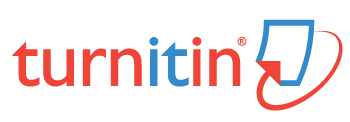Learning Cycle 5E Berbasis Blended Learning Sebagai Solusi Peningkatan Hasil Belajar Materi Konsep Redoks Di Masa Pandemi Covid 19
Blended Learning
DOI:
https://doi.org/10.55719/jt.v7i2.509Keywords:
redoks, hasil belajar, learning cycle 5E, blended learningAbstract
Redox involves several abstract concepts. This causes students to often experience difficulties and conceptual errors in understanding the concept. The integration of blended learning with the 5E learning cycle is one of the innovations in chemistry learning that can help students understand abstract chemical concepts. The integration of learning is called a learning cycle based on blended learning. This study aims to find out how to improve student learning outcomes for class X redox material at SMA N 1 Tuban with a learning cycle based on blended learning. This type of research is Classroom Action Research (CAR) conducted in two cycles. Each cycle consists of planning, implementing, observing and reflecting. The subjects in this study were students of class X MIPA-4 at SMA N 1 Tuban. The research instruments used were learning instruments (syllabus, lesson plans, and learning scenarios, and moodles) and measurement instruments (cognitive learning outcomes tests, observation sheets). Data analysis of the research results was carried out by analyzing student learning mastery. The results of this study concluded that a blended learning-based learning cycle can improve student learning outcomes on redox for class X SMA N 1 Tuban. This can be seen from the learning outcomes in the realm of knowledge, attitudes and skills. learning outcomes in the realm of knowledge showed an increase from pre-cycle, cycle I and cycle II. The learning outcomes of the pre-cycle, first-cycle, and second-cycle knowledge domains were 61.91, 74.74, and 84.09, respectively. Mastery learning also increased from pre-cycle, cycle I, and cycle II, namely 12.50%, 62.50% and 90.63%. The learning outcomes of the attitude domain gave an increase from cycle I to cycle II, namely 66.63 to 67.13. The learning outcomes of the skill domain gave an increase from cycle I to cycle II, namely 73.91 to 74.39.
Downloads
References
Aikina, T. Y., & Bolsunovskaya, L. M. (2020). Moodle-based learning: Motivating and demotivating factors. International Journal of Emerging Technologies in Learning, 15(2), 239–248. https://doi.org/10.3991/ijet.v15i02.11297
Ajizah, L., Sumari, S., Budiasih, E., Sukarianingsih, D., Santoso, A., & Fajaroh, F. (2021). The effect of the use of SHS-based LC-5E learning model on student learning outcomes of redox reaction. AIP Conference Proceedings, 2330(March), 551–557. https://doi.org/10.1063/5.0043411
Alam, M. S., & Agarwal, J. (2020). Adopting a Blended Learning Model in Education: Opportunities and Challenges. International Journal of Early Childhood Special Education. , 12(2), 1-7. https://doi.org/10.9756/INT-JECSE/V12I2.201050
Hrastinski, S. (2019). What Do We Mean by Blended Learning? TechTrends, 63(5), 564–569. https://doi.org/10.1007/s11528-019-00375-5
Indriani, A., Suryadharma, I. B., & Yahmin, Y. (2017). IDENTIFIKASI KESULITAN PESERTA DIDIK DALAM MEMAHAMI KESETIMBANGAN KIMIA. J-PEK (Jurnal Pembelajaran Kimia), 2(1), 9–13. https://doi.org/10.17977/um026v2i12017p009
Khoiroh, N. (2018). Pengaruh Model Pembelajaran Blended Learning dan Motivasi Belajar Terhadap Hasil Belajar Peserta didik Kelas VIII SMPN 1 Gumukmas. JURNAL PENELITIAN ILMU PENDIDIKAN, 10(2), 97–110. https://doi.org/10.21831/jpipfip.v10i2.13986
Krismadinata, Verawardina, U., Jalinus, N., Rizal, F., Sukardi, Sudira, P., Ramadhani, D., Lubis, A. L., Friadi, J., Arifin, A. S. R., & Novaliendry, D. (2020). Blended learning as instructional model in vocational education: Literature review. Universal Journal of Educational Research, 8(11B), 5801–5815. https://doi.org/10.13189/ujer.2020.082214
Lebeaux, D., Jablon, E., Flahault, C., Lanternier, F., Viard, J. P., Pacé, B., Mainardi, J. L., & Lemogne, C. (2021). Introducing an Open-Source Course Management System (Moodle) for Blended learning on infectious diseases and microbiology: A pre-post observational study. Infectious Diseases Now, 51(5), 477–483. https://doi.org/10.1016/j.idnow.2020.11.002
Munika, A., & Kurniati, T. (2021). Penerapan Model Discovery Learning Berbantuan Alat Peraga Balon Dan Molymod Pada Materi Bentuk Molekul Untuk Meningkatkan Hasil Belajar Peserta didik Sma Negeri 2 Sungai Ambawang. AR-RAZI Jurnal Ilmiah, 9(1), 39–44. https://doi.org/10.29406/ar-r.v9i1.2532
Nafiati, D. A. (2021). Revisi taksonomi Bloom: Kognitif, afektif, dan psikomotorik. Humanika, 21(2), 151–172. https://doi.org/10.21831/hum.v21i2.29252
Nisa, N. A., & Fitriza, Z. (2021). Identifikasi Mikonsepsi Peserta didik Menengah Atas (SMA) Pada Pembelajaran Kimia Materi Redoks dan Elektrokimia : Studi Literatur. Edukatif : Jurnal Ilmu Pendidikan, 3(4), 1191–1198.
Nur Syahfika Abdul Shukor, & Zolkepli Harun. (2018). Cabaran penerapan pembelajaran abad ke-21 dalam mata pelajaran Sains. International Conference on Geography and Education, 410–418.
Piyayodilokchai, H., Panjaburee, P., Laosinchai, P., Ketpichainarong, W., & Ruenwongsa, P. (2013). A 5E learning cycle approach-based, multimedia-supplemented instructional unit for structured query language. Educational Technology and Society, 16(4), 146–159.
Puluhulawa, I., Hulukati, E., & Kaku, A. (2020). Pengaruh Model Pembelajaran Learning Cycle dan Penalaran Formal terhadap Hasil Belajar Matematika. Jambura Journal of Mathematics Education, 1(1), 32–40. https://doi.org/10.34312/jmathedu.v1i1.4557
Putra, F., Nur Kholifah, I. Y., Subali, B., & Rusilowati, A. (2018). 5E-Learning Cycle Strategy: Increasing Conceptual Understanding and Learning Motivation. Jurnal Ilmiah Pendidikan Fisika Al-Biruni, 7(2), 171–181. https://doi.org/10.24042/jipfalbiruni.v7i2.2898
Rijal, S., & Bachtiar, S. (2015). Hubungan antara Sikap, Kemandirian Belajar, dan Gaya Belajar dengan Hasil Belajar Kognitif Peserta didik. Jurnal Bioedukatika, 3(2), 15. https://doi.org/10.26555/bioedukatika.v3i2.4149
Samsudin, M., & Ni Nyoman Utami, J. (2019). Pengembangan Pembelajaran E-learning Dengan Moodle (Modulator Object-Oriented Dynamic Learning Environment). Jurnal Sistem Dan Informatika (JSI), 14(1), 1–8. https://doi.org/10.30864/jsi.v14i1.210
Sanger, M. J., & Greenbowe, T. J. (1997). Common Student Misconceptions in Electrochemistry: Galvanic, Electrolytic, and Concentration Cells. Journal of Research in Science Teaching, 34(4), 377–398. https://doi.org/10.1002/(SICI)1098-2736(199704)34:4<377::AID-TEA7>3.0.CO;2-O
Shamsuddin, N., & Kaur, J. (2020). Students’ learning style and its effect on blended learning, does it matter? International Journal of Evaluation and Research in Education, 9(1), 195–202. https://doi.org/10.11591/ijere.v9i1.20422
Vellayati, S., Nurmaliah, C., Sulastri, S., Yusrizal, Y., & Saidi, N. (2020). Identifikasi Tingkat Pemahaman Konsep Peserta didik Menggunakan Tes Diagnostik Three-Tier Multiple Choice pada Materi Hidrokarbon. Jurnal Pendidikan Sains Indonesia. https://doi.org/10.24815/jpsi.v8i1.15715
Wahyudiati, D., & Fitriani, F. (2021). ETNOKIMIA: EKSPLORASI POTENSI KEARIFAN LOKAL SASAK SEBAGAI SUMBER BELAJAR KIMIA. Jurnal Pendidikan Kimia Indonesia, 5(2), 102–111. https://doi.org/10.23887/jpk.v5i2.38537
Yanni, M. L., Munzil, M., & Sumari, S. (2021). Developing multiple representation’s teaching materials assisted by blended learning to improve student’s science process skills. AIP Conference Proceedings, 2330(March), 531–534. https://doi.org/10.1063/5.0043275
Yekefallah, L., Namdar, P., Panahi, R., & Dehghankar, L. (2021). Factors related to students’ satisfaction with holding e-learning during the Covid-19 pandemic based on the dimensions of e-learning. Heliyon, 7(7), e07628. https://doi.org/10.1016/j.heliyon.2021.e07628
Downloads
Published
How to Cite
Issue
Section
License
Copyright (c) 2022 Jurnal Teladan: Jurnal Ilmu Pendidikan dan Pembelajaran

This work is licensed under a Creative Commons Attribution-ShareAlike 4.0 International License.








